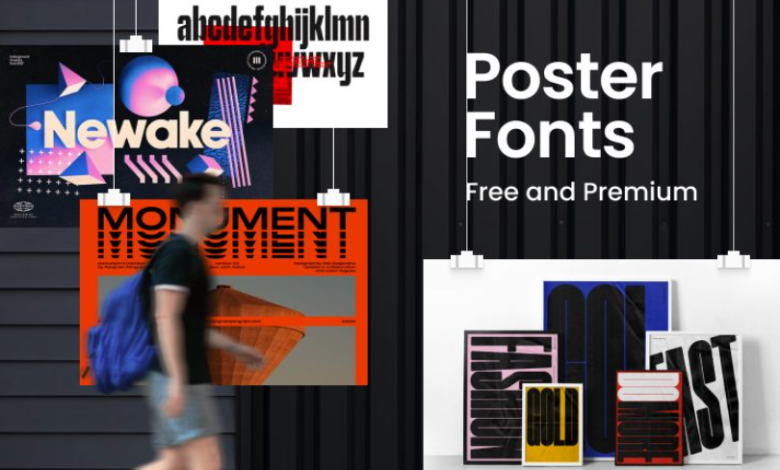Fonts for Posters: How to Make Your Design Stand Out

Posters are a powerful medium for communication, whether used for events, advertisements, or awareness campaigns. A poster’s success depends on how effectively it captures attention and communicates its message. While colors, images, and layout play important roles, typography often determines whether the poster is readable and engaging. Choosing the right fonts for posters can enhance visibility, convey the intended mood, and ensure that information is delivered clearly to the audience.
Types of Fonts for Posters
Display Fonts
Display fonts are designed to be eye-catching and bold. They are perfect for headlines, titles, or main messages on a poster. These fonts often have exaggerated proportions, unique shapes, or artistic elements that make them memorable. However, they should be used sparingly to avoid overwhelming the design.
See also: Top Applications of AI Face Swap Technology in Entertainment
Sans-Serif Fonts
Sans-serif fonts are modern, clean, and versatile. They are highly legible on both print and digital posters, making them ideal for subheadings, body text, or informational details. Fonts like Helvetica, Open Sans, and TypeType’s TT Norms® Pro are popular choices for creating sleek and contemporary poster designs.
Serif Fonts
Serif fonts have small strokes at the ends of letters, adding elegance and tradition to a design. They work well for more formal posters, such as corporate events, exhibitions, or academic presentations. Serif fonts can also be used in combination with sans-serif fonts to create contrast and hierarchy.
Handwritten and Script Fonts
These fonts add personality and creativity to posters. Handwritten or brush-style fonts are suitable for informal, fun, or artistic events. They work best when paired with simpler fonts to avoid reducing readability.
Best Practices for Using Fonts in Posters
Limit the Number of Fonts
Using too many fonts can make a poster look chaotic. Stick to two or three fonts: one for headlines, one for subheadings, and one for body text. This creates a cohesive design while maintaining visual interest.
Establish Hierarchy
Hierarchy guides the viewer’s eye through the poster. Headlines should be the largest and most prominent, followed by subheadings, and then body text. Effective font choices and size variations help prioritize information.
Consider Readability
Always test your poster at the size it will be displayed. Fonts that are readable up close may not be legible from a distance. Adjust spacing, size, and weight to ensure clarity for viewers.
Pair Fonts Thoughtfully
Pairing fonts effectively adds visual balance. For example, combining a bold, decorative headline font with a clean, simple sans-serif body font ensures both style and readability. Avoid pairing fonts that clash or compete for attention.
Match Fonts to the Message
Choose fonts that reflect the poster’s theme and target audience. Playful fonts work for casual events, while elegant or professional fonts are better for formal or corporate posters. The font should reinforce the message and tone of the design.
Conclusion
Fonts are a critical element of poster design, influencing readability, visual impact, and audience perception. By carefully selecting display, sans-serif, serif, or script fonts, designers can create posters that grab attention, communicate clearly, and reflect the intended mood. Following best practices such as limiting font choices, establishing hierarchy, ensuring readability, and pairing fonts thoughtfully ensures that every poster is both visually appealing and effective in delivering its message.





